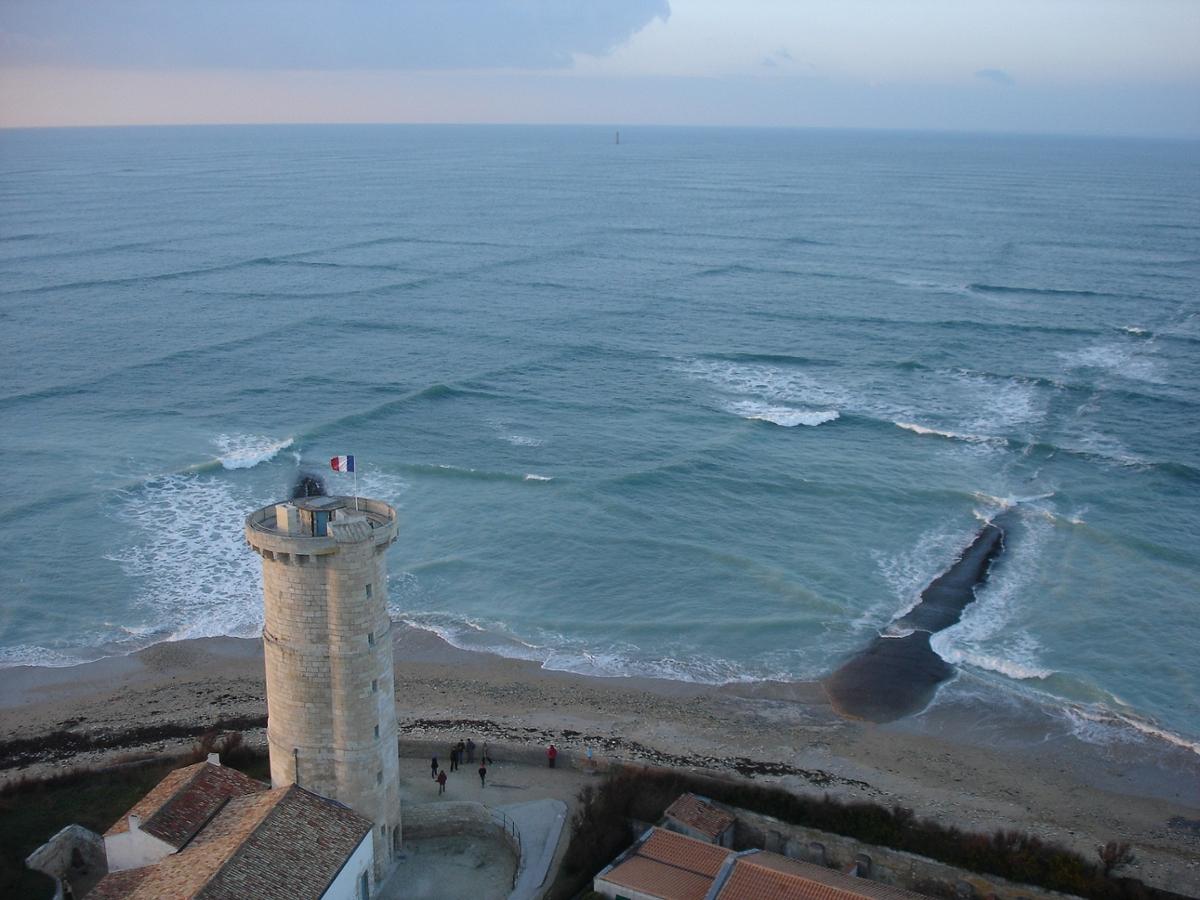Y: Hey Don. I’m planning a trip to the beach. I think I’ll go the Île de Ré, a small island off the west coast of France. It’s got sun, sand, … and square waves!
D: I’m having a hard time picturing that! What do you mean, Yaël?
Y: Imagine that you have a bird’s eye view and you’re looking down at the ocean. Normally you’d just see waves coming in parallel to the shore, right? But what if there were also waves moving perpendicular to the shore? You’d see the waves intersecting each other at roughly right angles. It looks like a grid on the surface of the water.
D: Oh, I get it! You’re talking about a “cross sea.” Waves are usually made when the wind blows in one direction over the surface of the water. But what happens when the wind suddenly shifts direction? The new wind causes waves as well. These winds can come from two different weather systems, each far away from each other. The waves from each system can meet in the middle at perpendicular angles. That’s a cross sea, and yeah, it does make the waves look square!
Y: Though the phenomenon can happen just about anywhere, the Île de Ré is famous for its square waves. They look so cool—I can’t wait to go swimming in them!
D: Wait! Don’t do that! Cross seas are dangerous: they indicate strong, uneven currents beneath the surface. But eventually, one of the wave patterns will dissipate and it becomes safe again.
Y: That’s too bad. But I’m still looking forward to my beach trip. I’ll send you a postcard!










